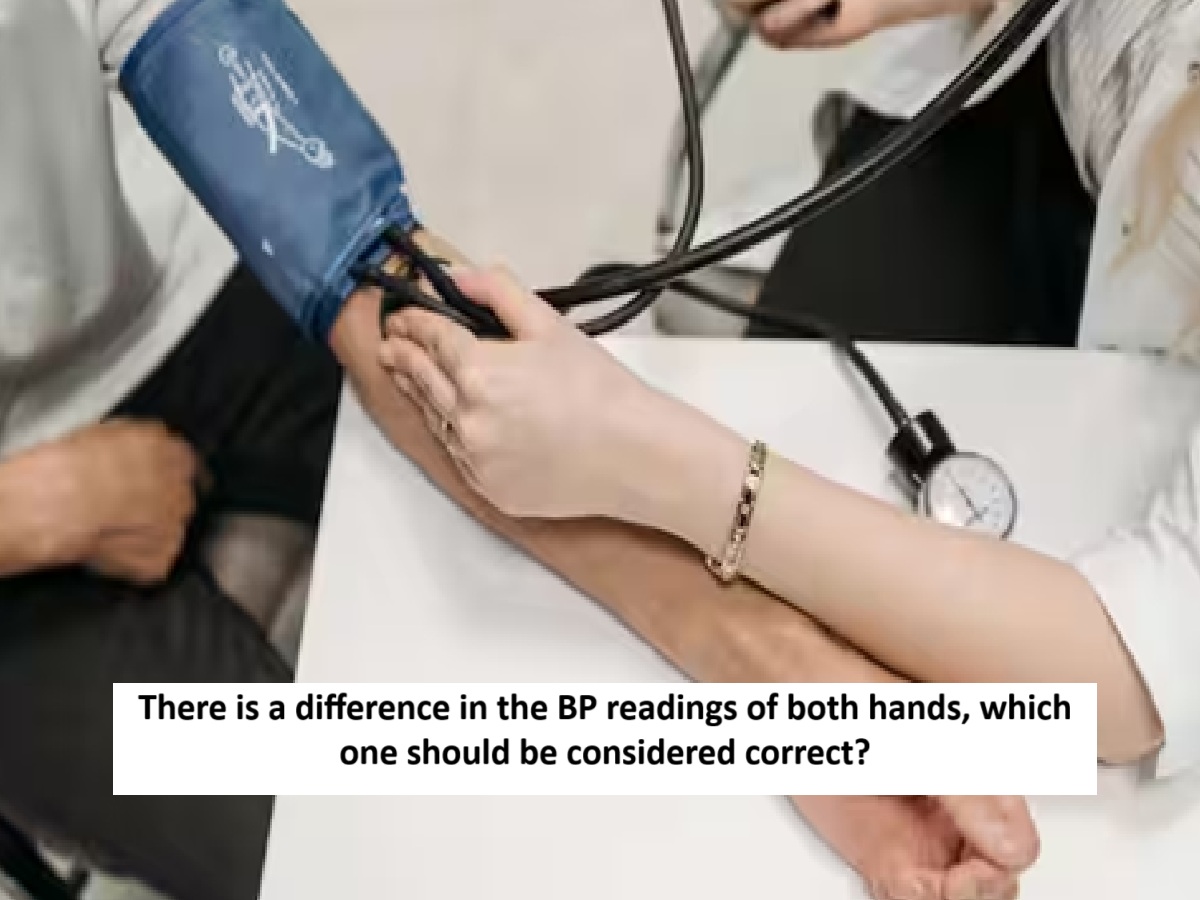
News Topical, Digital Desk : Nowadays doctors often advise patients to measure blood pressure (BP) in both hands. Many researches have found that there can be a difference in the readings of both hands and this difference can be related to health problems. Let us tell you why this is happening and if there is a difference between the two, then which one should be considered correct and why. Apart from this, what should be done.
Why should BP be measured with both hands?
The American Heart Association (AHA) guideline says that whenever blood pressure is taken for the first time, it should be measured in both arms. A large INTERPRESS-IPD meta-analysis published recently studied more than 50,000 patients. It found that if only the arm with lower readings is taken as the basis, then about 12 percent of cases can lead to wrong diagnosis. On the other hand, cardiovascular risk can be assessed correctly by taking the arm with higher BP as the basis.
How much difference is a matter of concern?
In primary care settings, about 19 percent of hypertension patients had a difference of more than 10 mmHg in systolic BP readings of both arms. And about 7 percent of patients also had a difference of more than 10 mmHg in diastolic BP. A Tamil Nadu study categorized this as follows: less than 5 mmHg, normal, 5 to 10 mmHg, low risk, 10 to 15 mmHg, moderate risk, and more than 15 mmHg, high risk.
Problems related to it
In type-2 diabetes patients, if there is a difference of more than 10 mmHg in both hands, then the risk of death was found to be 64 percent higher. On the other hand, patients who had a difference of more than 15 mmHg in the BP readings of both hands were found to have subclavian artery stenosis, low ankle-brachial index and more ischemia (lack of blood) in the heart.
Why is it important to measure BP correctly
New studies show that even a wrong position of the hand can result in wrong BP readings. If the hand is hanging down or is not supported, then the systolic BP can increase by an average of 6.5 mmHg and diastolic by 4.4 mmHg. The correct way is that the patient should sit straight on a chair, the feet should be on the floor, the back should be supported and the hands should be kept at the level of the heart. If there is a difference of 10 mmHg or more in the BP readings of both hands, then a doctor should be consulted. Always base the reading on the hand in which the BP is higher. This helps in correct assessment of heart and blood vessel related diseases.
What does the doctor say?
Doctors believe that it is very important to measure blood pressure (BP) in both hands. Often people check BP in just one hand (usually the left hand), but medical guidelines say that it should be measured in both hands for the first time. Dr. Deepa Singh, a specialist at Patna-based Auro Specialty Clinic, says, "If there is a difference of 10 mmHg or more in the readings of both hands, then it may be a sign of peripheral artery disease, blockage or heart disease. In such a case, the patient should get tested immediately."
In the UK's INTERPRESS-IPD study, doctors found that if only the readings of the hand with lower BP are taken as the basis, 12 percent of patients may be misdiagnosed. Therefore, experts recommend that the hand with higher BP should be considered as a reference and monitored further.
--Advertisement--

 Share
Share



